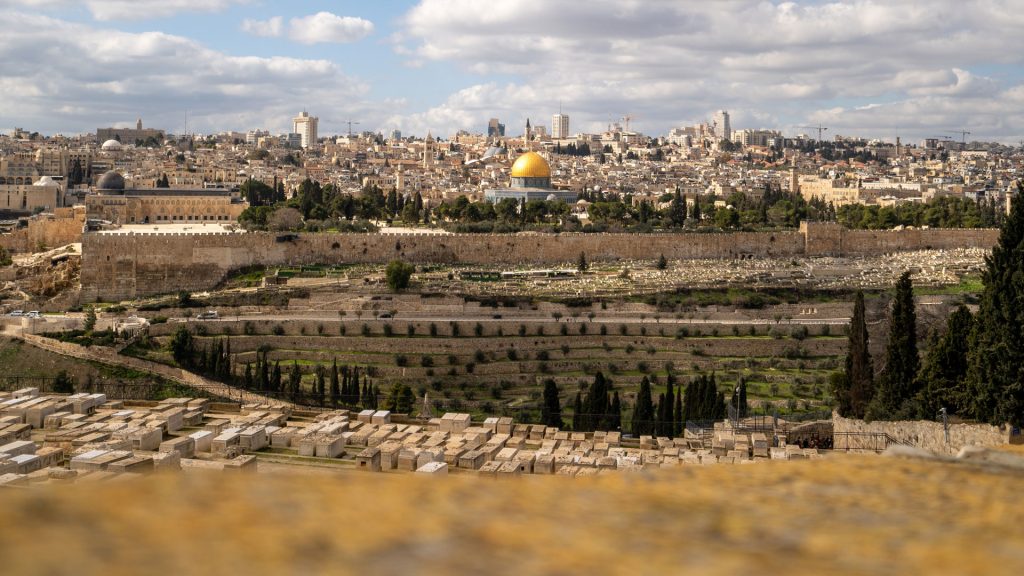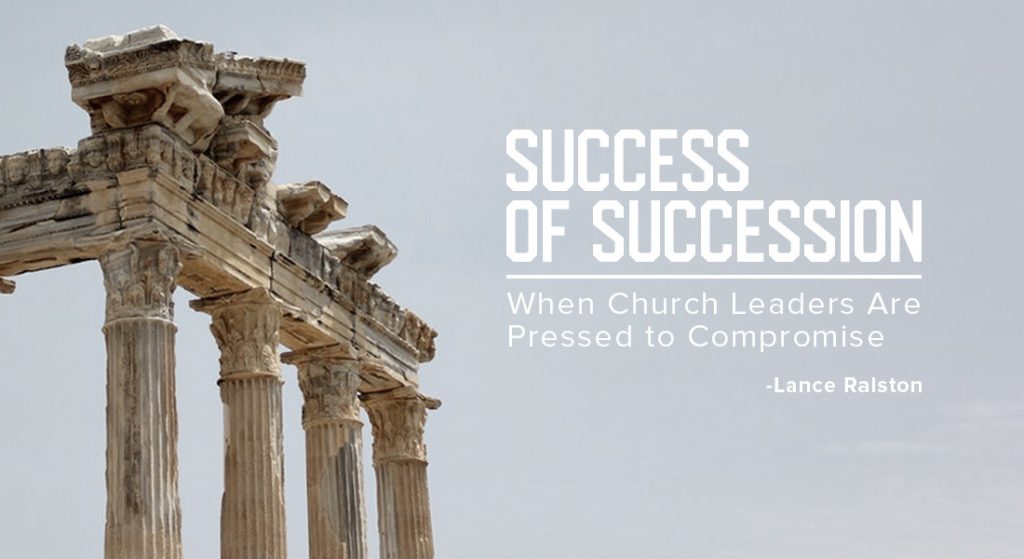Though I have been there more than a half-dozen times, I will never forget the first time seeing it. Standing on the vista of the Mount of Olives, overlooking the City of Jerusalem, is the iconic image of the Old City. It is the first view of the City that groups are typically given on a tour. The site provides a great lay of the land. The Temple Mount sits prominently before you, with the iconic gold-overlaid Dome of the Rock. Below the Temple Mount, between it and the Mount of Olives, is the Kidron Valley and Gethsemane. To the left of the Mount are the Southern Steps leading down toward the ruins of the City of David. In the distance beyond the Dome of the Rock, you can see the grey domes of the Church of the Holy Sepulcher. It is one of the most well-known cityscapes in all of the world. But there is nothing like seeing it in person.
Undoubtedly, Jerusalem is one of the most photographed cities in the world. But images on screens or paper do not do it justice. If you can see the City for yourself, you should take it. For many, it is a life-altering experience. As a pastor, who leads tours regularly, it is a joy to see people experience it for the first time. And once someone does, they do not read the Scriptures the same way.
Visiting Israel changes your perspective. The mental images we create when we read the Gospels are shattered. That is not a bad thing. Once you see Jerusalem or Galilee yourself, you have better frames of reference for Capernaum and Bethesda. You understand why the Gospels speak of “going up to Jerusalem” (Matthew 20:17) or going down from Cana to Capernaum (John 2:12). You can picture the Sheep Gate in the north of the Old City and the Pool of Siloam down the hill in the south. Though an outsider, you quickly gain local knowledge. The abstract becomes concrete.
When you see the Holy Land for yourself, you discover something important. The sites are not as you imagined them. The scale is not as grand. The distances are not as great. The Sea of Galilee is a moderately sized lake. The Garden of Gethsemane is a short walk from the city gates and the Temple Mount. When you see it all for yourself, you realize the Gospel narratives are historical accounts from individuals who lived and walked the land. Yet, critical New Testament scholar, Bart Ehrman, says, “Stories about Jesus … are not being told only by eyewitnesses or even by Palestinian Jews from about the same time and place as Jesus. They are being told mainly by people who have never been to Palestine, don’t speak the language of Palestine, have never known anyone from Palestine—let alone anyone from Palestine who happened to have met Jesus.” [1]
While Ehrman’s assertions resonate with skeptics and critics, they fail to align with the facts. A careful reading of the Gospels reveals that the authors were intimately familiar with the geography and locales of Jerusalem, Judea, Samaria, and Galilee. If those without firsthand knowledge of Palestine had fabricated the stories, as Ehrman proposes, we would expect to find errors and inconsistencies. Yet archaeology and textual study uncover no such mistakes. The precise details point to eyewitness testimony, not mythical invention. The evidence on the ground refutes Ehrman’s claims and confirms the Gospels’ historical reliability.
Moreover, the Gospels’ accurate depiction of the history and geography of the Judean world of the first century has aided historians and archaeologists. The Scriptures provide valuable clues that help reconstruct the political, cultural, and physical landscape of the period and place, which was all but lost with the destruction of Jerusalem in 70 AD. The precise details of the text have guided excavations and research, revealing what would otherwise remain obscure. Oft overlooked references in the Gospels indicate that the authors knew and understood the customs, culture, and landscape of the world in which Jesus lived. The Gospel accounts are not the imaginative inventions of storytellers detached from the setting. Rather, they are the firsthand testimonies of eyewitnesses.
In light of the evidence, Ehrman’s bold claim that the Jesus stories were told by those that had never been to Palestine does not hold up. When seen with the backdrop of the witness of the historical sites of the Holy Land, which Catholic archeologist and monk Bargil Pixner called “The Fifth Gospel,” the fourfold witness of the New Testament Gospels are seen for what they truly are – The reliable and historical account of the life and times of Jesus of Nazareth. Together they give us insight into the political makeup of the royalty, the religious groups, and the Romans in first-century Judea. They detail the cultural and religious customs of late Second Temple Judaism. And they direct us to beautiful sites from antiquity previously lost to history. For those with eyes to see, the living land of Israel and its Scriptures reveal and confirm each other in vivid and reliable detail.
Photo by Dariusz Kanclerz on Unsplash
[1] Ehrman, Bart D.. Jesus Before the Gospels (p. 85). HarperCollins. Kindle Edition.
Miles is the senior pastor of Cross Connection Church in North San Diego County, California. He serves as a board member at Enduring Word and Blue Letter Bible.
Miles has a master of divinity degree from Gateway Seminary in California, and is finishing a doctor of educational ministry at Southern Baptist Theological Seminary in Kentucky.
Miles and his wife Andrea have four children, two dogs, three rabbits, a tortoise, a chinchilla, a hamster, a cat, and a crested gecko.





I woke up the other morning and found that I’d written, “church of the holy sepulcher” in a notebook while I was sleeping. I’ve had “psychic” episodes in the past, I saw 9/11 before it happened. I’m a Christian and God made Himself known to me before I started seeing buildings fall in my mind. I’m wondering why this was in my head, too…..
I’m a senior citizen and I just discovered Enduring Word. I ‘m teaching in a Nursing Home and I’ve
been so pleased with the help you have given me in teaching the book of Daniel. I ‘m 85 and have
developed eye aging issues. The light of the monitor screen tires my eyes easily. Is there a way I
can purchase the commentaries of Daniel in LP ?
I’m so encouraged with the research you have done to make the Word of God more easily understood for Seniors. I don’t read your publications to them, but I do glean interesting facts from your essays to keep their interest and help them understand. Thank you, Ann Wilkinson, [email protected]